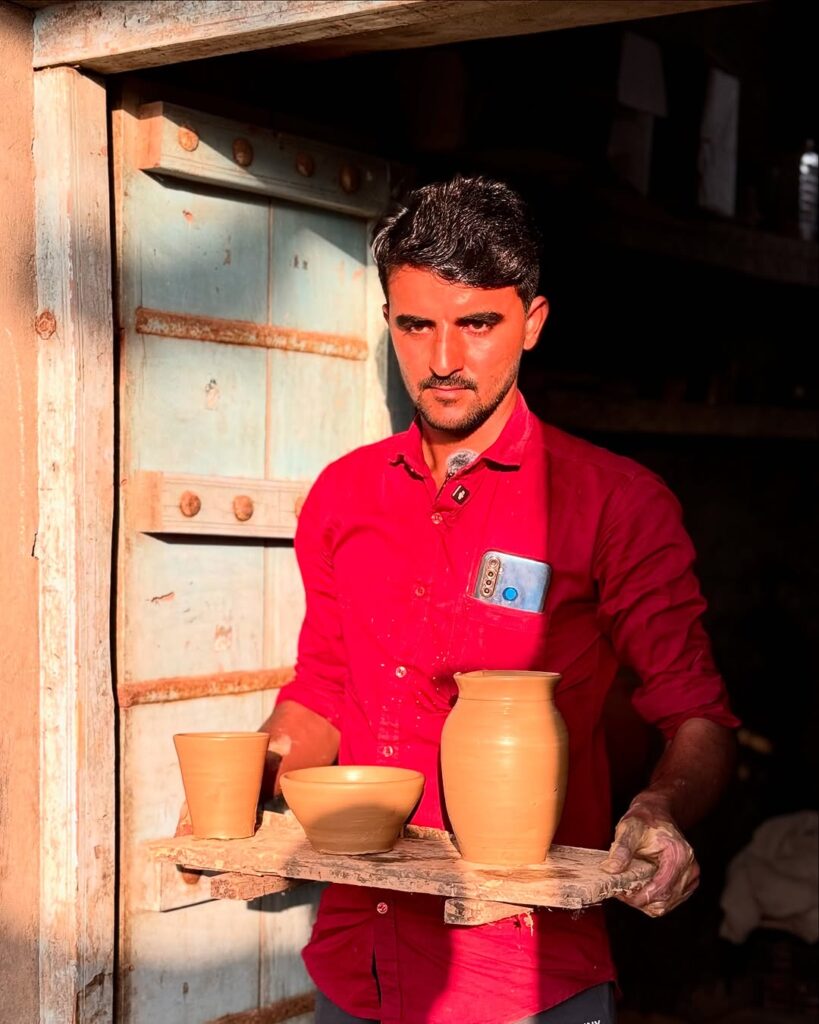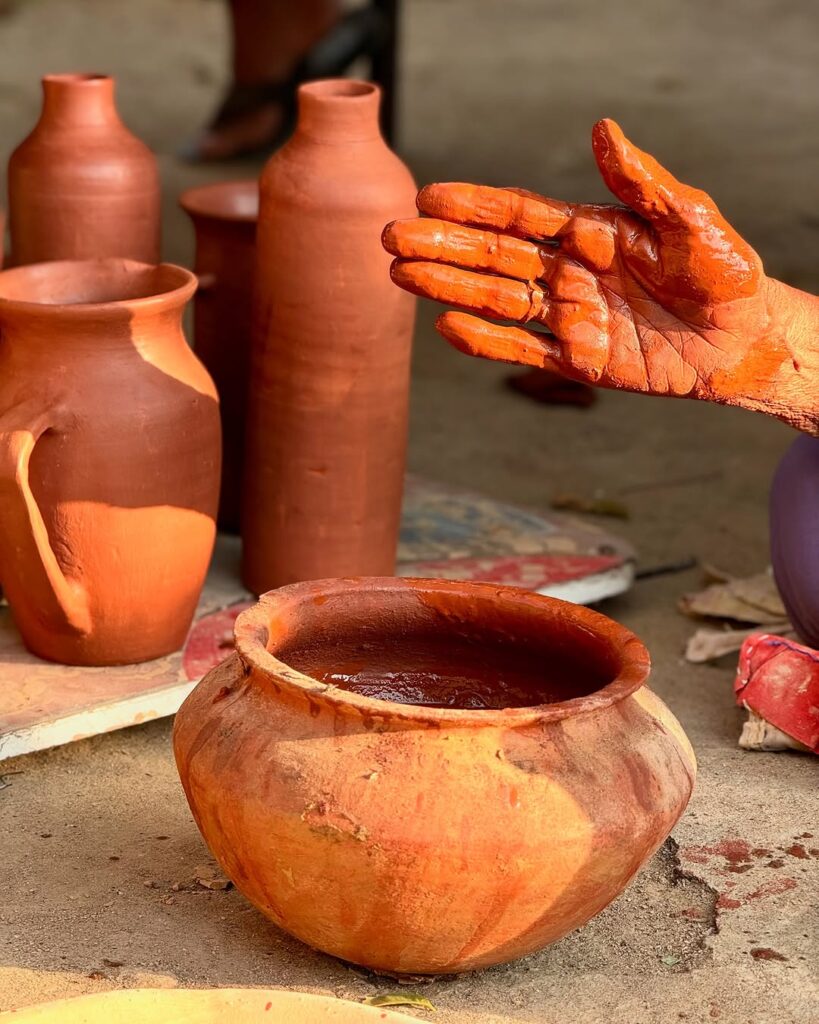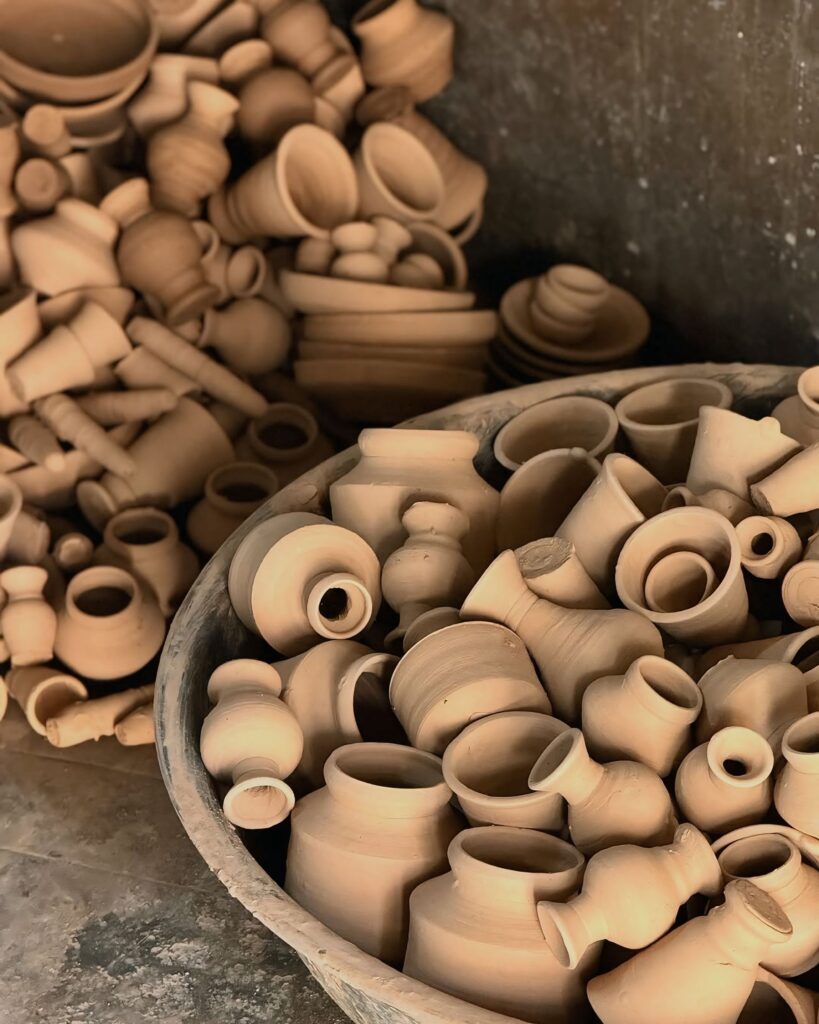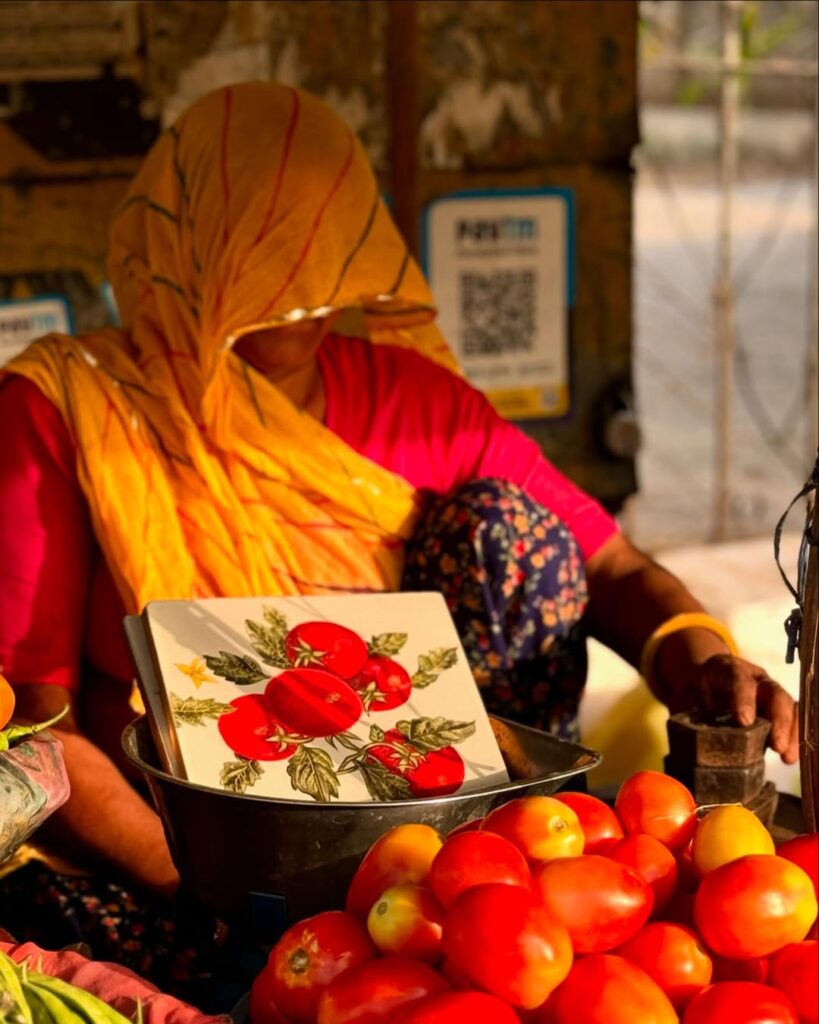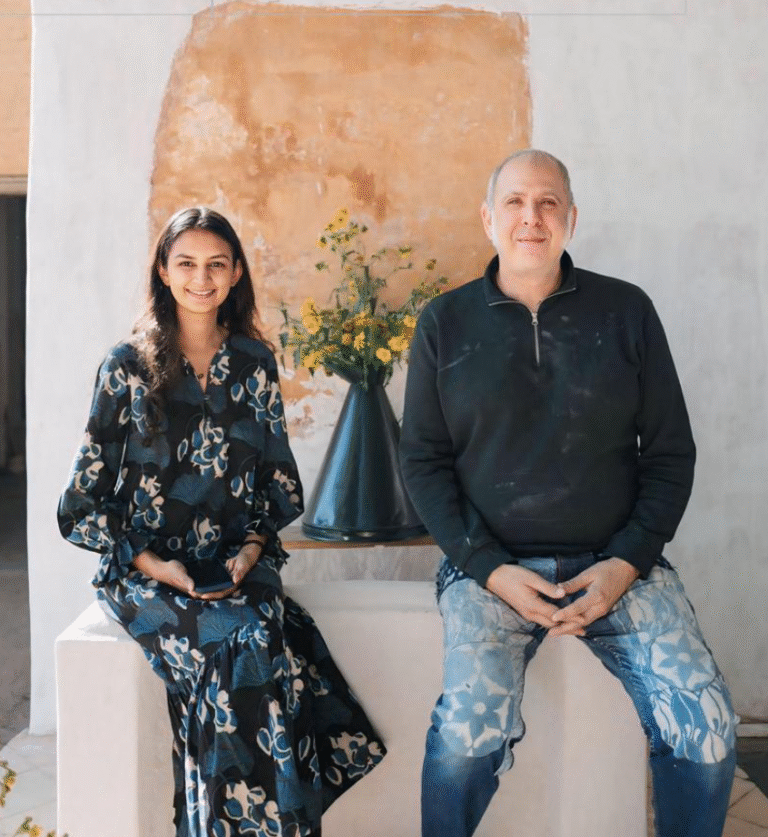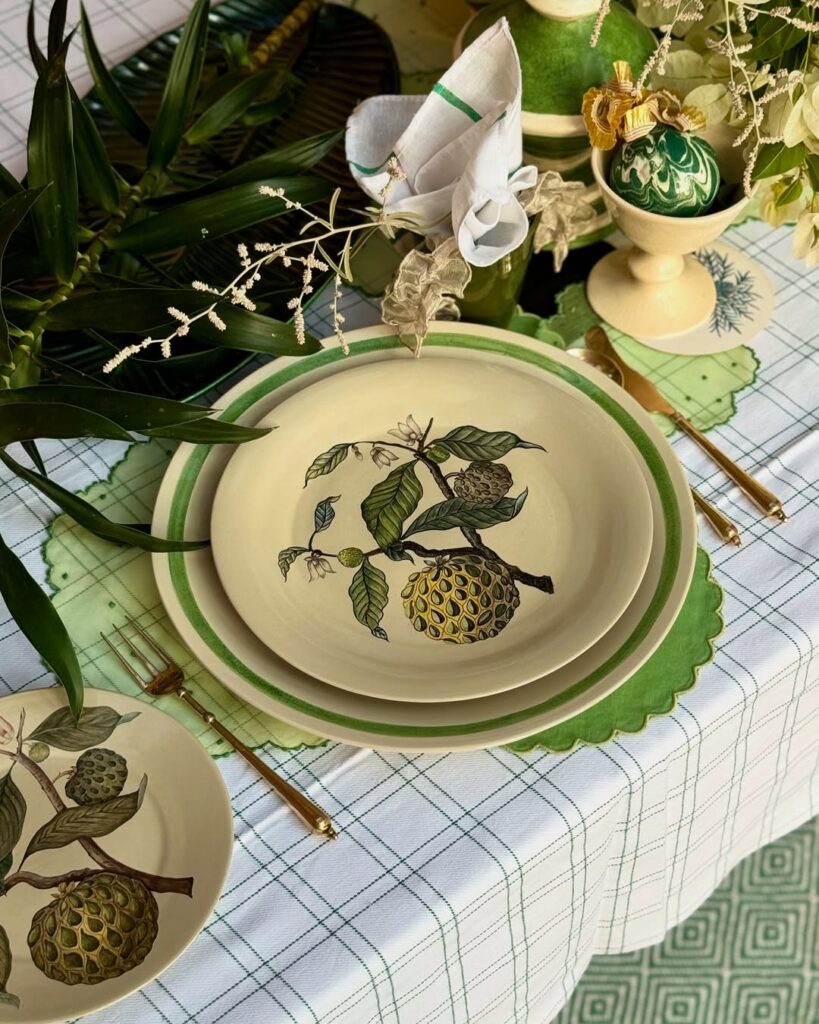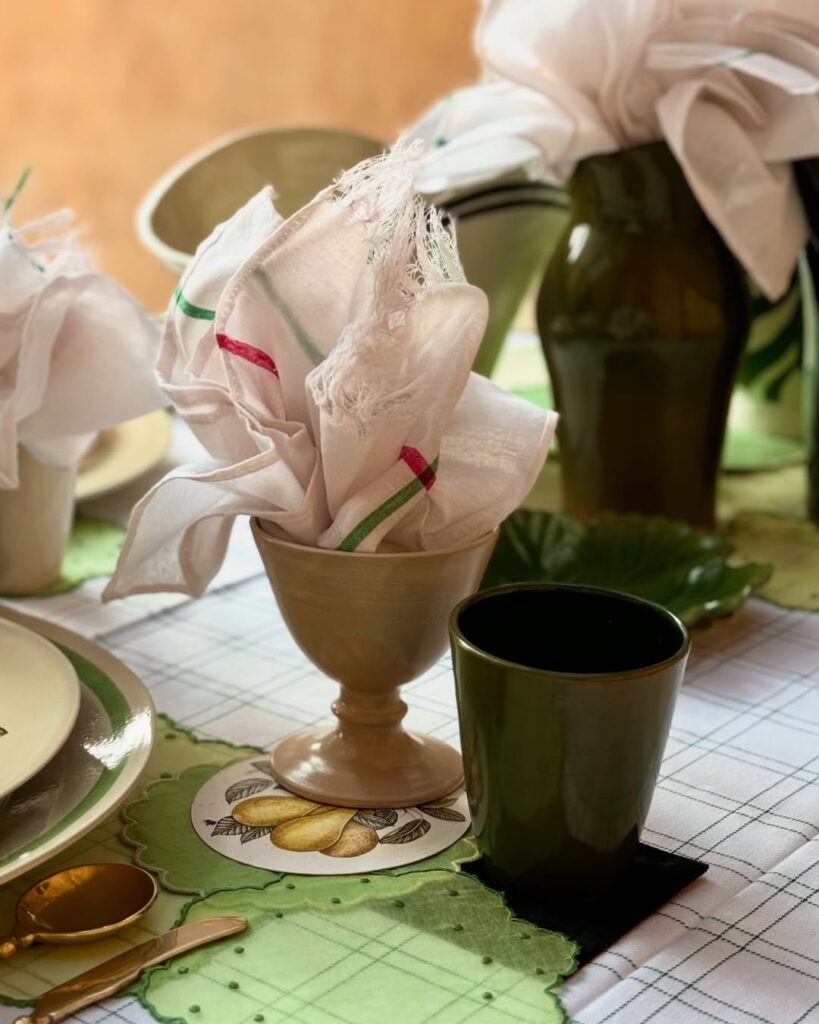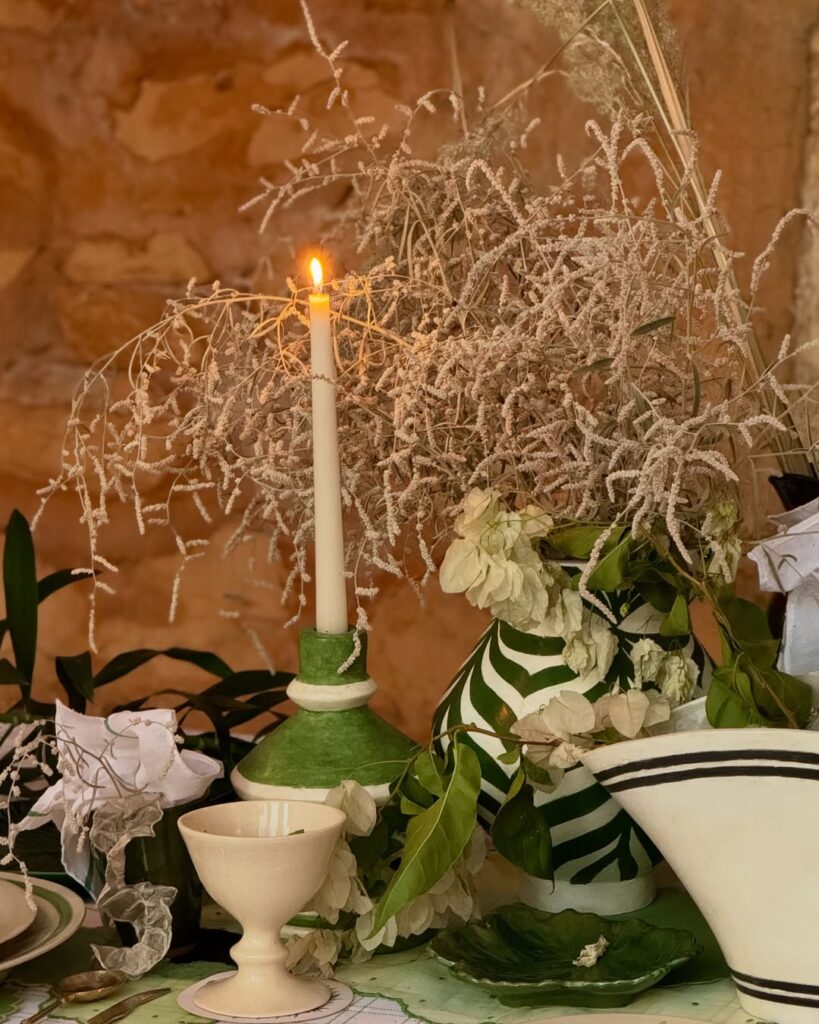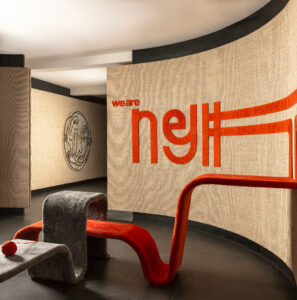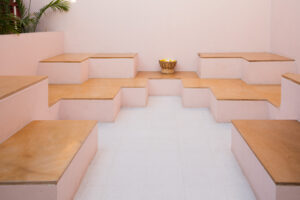Making Clay Speak
Every design starts with digging into references—archives, manuscripts, forgotten motifs—before moving to the wheel. Simon sketches and reshapes forms until the kiln delivers something that feels inevitable. Then the painters step in with their arsenal of fine brushes. This is the same Rajasthani miniature style once reserved for royal portraits and palace frescoes, now reborn on cups, plates, and bowls. Delicate florals, sweeping calligraphy, and jaali-inspired patterns wrap around clay surfaces, each motif carefully scaled to fit curves and edges.
And the clay itself? Bikaner’s kaolin is the star. Revered for its purity and strength, it gives Khanoom ceramics a smooth finish and the kind of durability that withstands daily use. The studio’s glazes are mixed in-house, creating textures that shift from soft matte to glossy shine. These are ceramics built for both beauty and practicality, engineered for the dishwasher but finished by hand.
Heritage That Fits the Present
Khanoom is not about freezing tradition; it is about upgrading it. The pieces are meant to slip into everyday routines without losing cultural resonance. A marigold painted on a dinner plate nods to ritual while staying modern enough for a weekend brunch. A coffee cup dressed in Mughal geometry feels like history retold for contemporary mornings. “We want to create joy that actually participates in life,” Simon explains. “Not shelf pieces. Living pieces.”
The Larger Impact
Jaipur has always been a craft city, but many of its traditions have thinned under industrial pressure. Khanoom flips that narrative by offering full-time wages, long-term stability, and design-led relevance. The ripple effect is real: families who once considered abandoning the potter’s wheel or brush can now see a future in it.
Sustainability also runs through their DNA. Clay is natural and biodegradable, and Khanoom’s small-batch, localized production avoids the industrial excess of mass ceramics. Each piece is slow-made, not disposable, carrying the idea that longevity is the new luxury.
From Khullads to Collectibles
What began with a tea cup has grown into a vocabulary of ceramics collected by design enthusiasts in India and abroad. Their work sits on curated dining tables, in design-forward stores, and in homes where story matters as much as style.
At its core, Khanoom Jaipur proves that heritage does not have to sit behind glass to be respected. It can thrive in kitchens, on dining tables, and in daily rituals, carrying memory while still moving forward. Clay that once molded chai cups for roadside stalls now exists as collectible ceramics in global homes.
And sometimes, the most radical design ideas really do start over a cup of chai.

